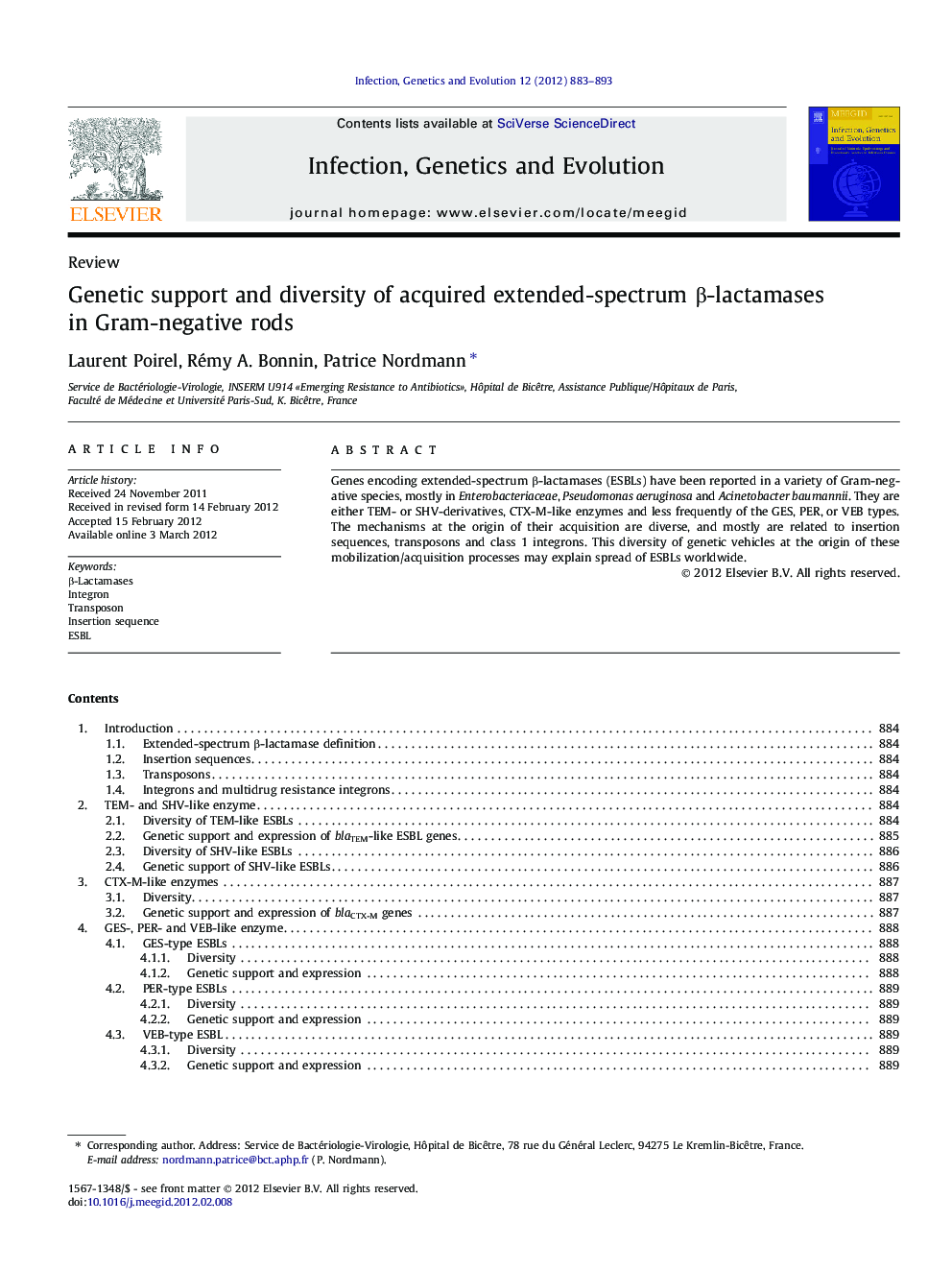| Article ID | Journal | Published Year | Pages | File Type |
|---|---|---|---|---|
| 5911178 | Infection, Genetics and Evolution | 2012 | 11 Pages |
Genes encoding extended-spectrum β-lactamases (ESBLs) have been reported in a variety of Gram-negative species, mostly in Enterobacteriaceae, Pseudomonas aeruginosa and Acinetobacter baumannii. They are either TEM- or SHV-derivatives, CTX-M-like enzymes and less frequently of the GES, PER, or VEB types. The mechanisms at the origin of their acquisition are diverse, and mostly are related to insertion sequences, transposons and class 1 integrons. This diversity of genetic vehicles at the origin of these mobilization/acquisition processes may explain spread of ESBLs worldwide.
⺠Extended-spectrum β-lactamases (ESBLs) genes are very diverse in Gram negatives. ⺠Acquisition is linked to insertion sequences, transposons and class 1 integrons. ⺠We examine the genetics of expression of those genes. ⺠We highlight the diversity of genetic vehicles involved in their mobilization.
